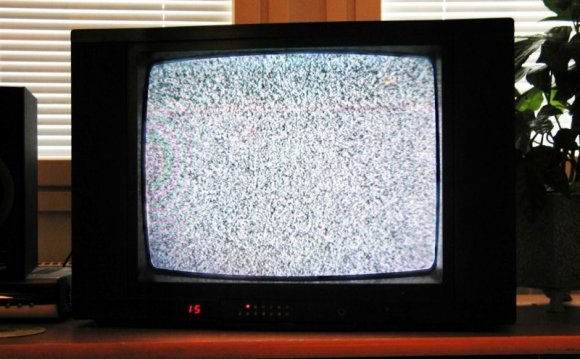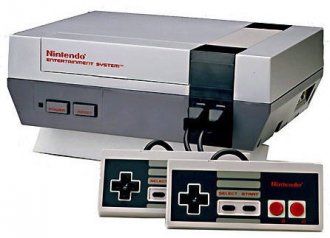
 Science fiction writer Arthur C. Clarke wrote "Any sufficiently advanced technology is indistinguishable from magic." When you read those words, you might imagine yourself showing an iPad to someone from the 1800s. You probably don't think twice about blowing into your old Nintendo Game Paks to get them to load properly. I mean, you know how those work, right?
Science fiction writer Arthur C. Clarke wrote "Any sufficiently advanced technology is indistinguishable from magic." When you read those words, you might imagine yourself showing an iPad to someone from the 1800s. You probably don't think twice about blowing into your old Nintendo Game Paks to get them to load properly. I mean, you know how those work, right?
The tech world is full of silly tricks that everyone has done once or twice, but not everyone knows exactly why (or whether) they really work. From pointing your car key fob at your jaw to improve range, to using a small child to improve your TV's antenna reception, we've decided to get to the bottom of these shenanigans once and for all.
Boost Your Car's Key Fob Range (by Pointing It at Your Head)
Tech urban legend says that you can increase your car's key fob by strategically pointing it at your head-something to do with the shape of your skull acting as a directional antenna of sorts. Skeptical? So were we-until we tested it with PCWorld Editorial Director Steve Fox's car in our parking lot.
First, we tried to establish the key fob's maximum range with a standard grip while maintaining a line-of-sight connection-which turned out to be about 100 feet from the car. At that distance, we found, the car responded to 1 of every 20 to 30 button presses. Then we had four different staffers lock and unlock the car while pointing the key fob at our heads, either holding it up against the bottom of our chins or pointing it at our temples (as though we were playing Russian Roulette). To our surprise, this method enabled us to move an additional 40 feet or so away from the car and still get effective performance from the key fob; at that point we reached the wall of the parking lot, putting an end to the experiment. Different people achieved their best results by holding the key fob at different parts of their head-presumably because the shapes of their skulls differed-but the trick clearly was effective.
The verdict: Well, it worked for us. Try it yourself if you don't believe us.
 Blowing Into Your NES Game Cartridges
Blowing Into Your NES Game Cartridges
Gray screen? Pull the game out and blow. Distorted graphics? Blow. Can't beat Air Man in Mega Man 2? Might as well try. But why did this seem to work? GamePro editor Kat Bailey says: "The [cartridge-console contact points] would get dirty, so people tried to solve the problem by blowing into it. It seemed to work, but that's probably due more to the fact that people were also pulling the game out and sticking it back into the system. In reality, it oxidized the connectors and made everything worse."
Now, some of you will adamantly insist that it your special blowing technique made everything work-never mind that Nintendo's instruction manuals have always explicitly warned users not to blow in there. So I dug up some splendid side-by-side testing from the Retrogaming Roundtable forums, courtesy of FRANKIE_SAYS_RELAX. Basically, he took two near-mint versions of Gyromite and blew on one every day for 30 days to observe the effect it would have on the contact points, and it's not pretty. Whereas the control cart remained the same over the 30-day test period, the test cartridge accumulated grime and possibly even bacteria and mold on its contact points, no doubt making it harder for the NES to read it. (The tester suspects that this experiment also gave him a sore throat a few weeks in.)
It didn't help that the NES's cartridge connector was prone to wear and tear that would cause "the blinkies." Check out PCWorld contributor Benj Edwards's article on Vintage Computing and Gaming about replacing the connector yourself, if you're so inclined.
 The verdict: It's possible that saliva particles in your exhaled breath might make the contact points temporarily more conductive, but unless you want to grow mold on your treasured NES carts, we advise you to swab your NES down with a Q-tip and a proper cleaning solution instead.
The verdict: It's possible that saliva particles in your exhaled breath might make the contact points temporarily more conductive, but unless you want to grow mold on your treasured NES carts, we advise you to swab your NES down with a Q-tip and a proper cleaning solution instead.
Amplify Wi-Fi With a Fork
Picture this: You're on the road, looking for a quick hit of some open Wi-Fi to send an email message or check your RSS reader. So you're scanning and scanning, picking up your laptop and walking all over the place while your Wi-Fi stumbler app keeps trying to pick up some new networks. You've just about given up hope when-success! You see an open network. Unfortunately, the signal is a bit too weak for you to sustain a connection.
These days, finding a decent Wi-Fi network usually isn't that hard, since it's practically mandatory for many places of business, but every now and then you'll find that you need a bit more juice to get it to work. A buddy of mine used to swear by a (rather unorthodox) trick with his 2007-era MacBook. The magnetic latch in the LCD bracket display also houses the MacBook's Wi-Fi antenna assembly. Grab a long, thin metal object (he used a fork) and stick it to the magnet in the upper left corner, and it'll function as an impromptu antenna extension, which could be just what you need to connect to an open network on the cusp of your range.
To test his claims, I collected a fork and a 2007-era MacBook, and used KisMAC to check the signal strength readings. Though attaching the fork did seem to cause the signal readings to fluctuate, its overall effect was to weaken the signal strength somewhat, meaning that it probably wouldn't improve your actual network connection. It did cause networks to appear in the scanning list that previously weren't registering, but I couldn't connect to them.
The verdict: Bunk. If you want a DIY Wi-Fi antenna, you'll have to splurge on something proven like the classic Cantenna.
Get Better HDTV Reception
Remember all the adjustments and augmentations you used in trying to improve your TV's reception of over-the-air broadcast signals? You probably wrapped the antenna in aluminum foil, contorted it into a multitude of positions seemingly inspired by the Kama Sutra, or bribed a small child to hold onto it for half an hour while you caught the last quarter of the Big Game. And bizarrely enough, it worked.
Odds are, you probably switched to cable TV with the rest of the civilized world a decade or so ago, obviating the need for those tricks. If you're trying to cut your cable TV expenses and get by with over-the-air HD broadcasts for your live TV needs, however, you'll want to bring back your old bag of tricks back. So we tested them out to see what worked and what didn't.
Most HD tuner/antennas these days include an auto-tuning feature that will set your antenna to pick up the strongest possible signal for your area and add all the local channels to your list. But you'll still need to do some antenna-tweaking of your own, which is why many tuners (built-in and external) include a signal strength menu. Just select a channel, and your tuner will report your current signal strength while the station plays, giving you instant feedback on where and how to position your antenna.








